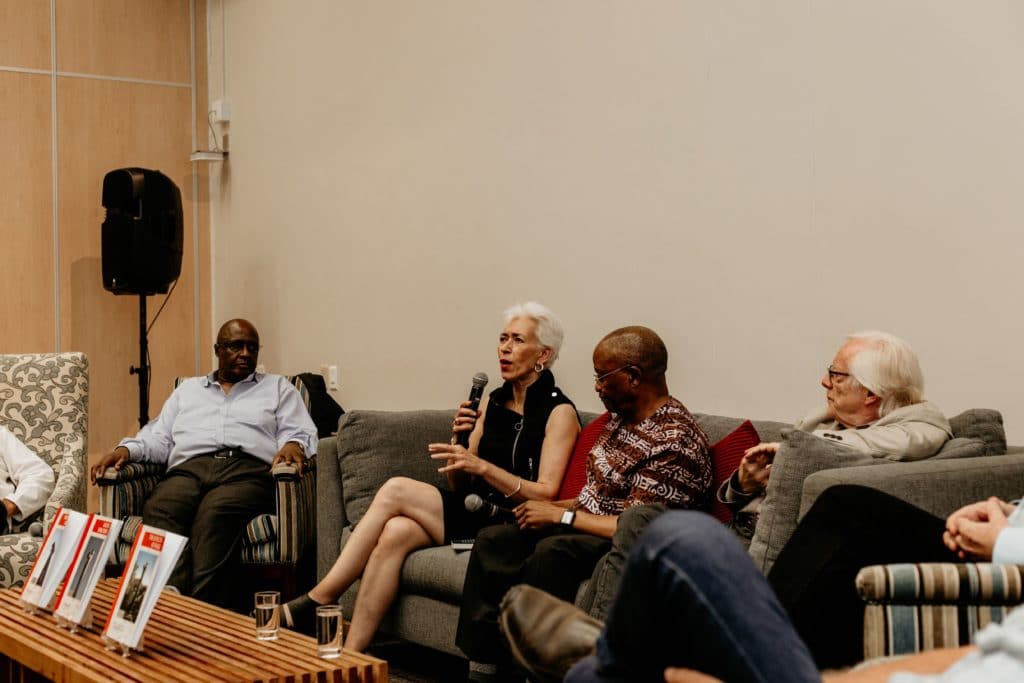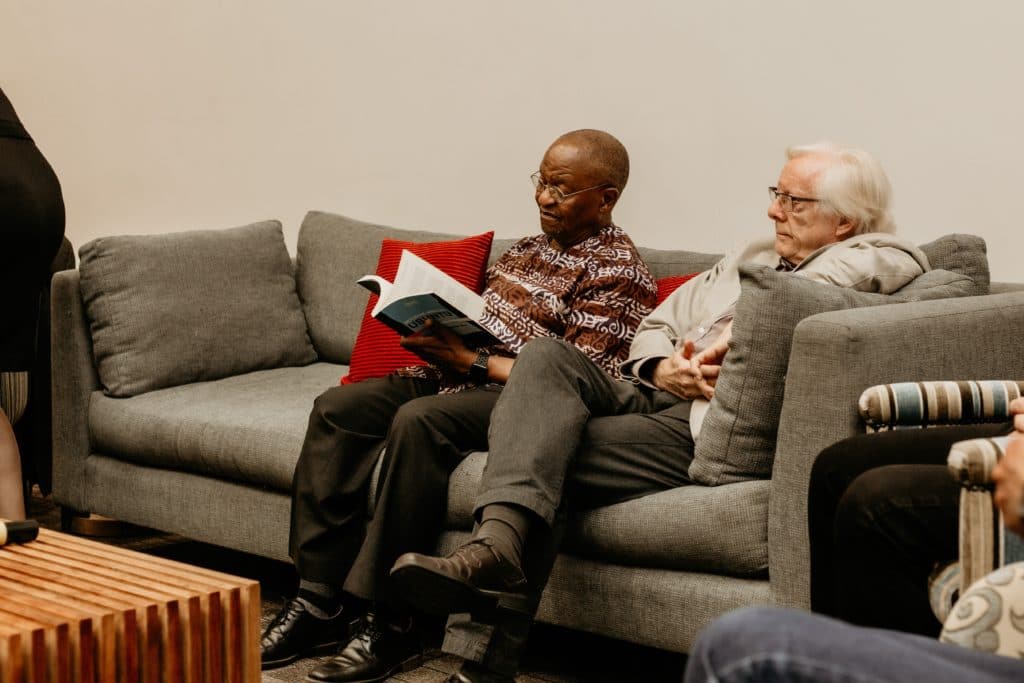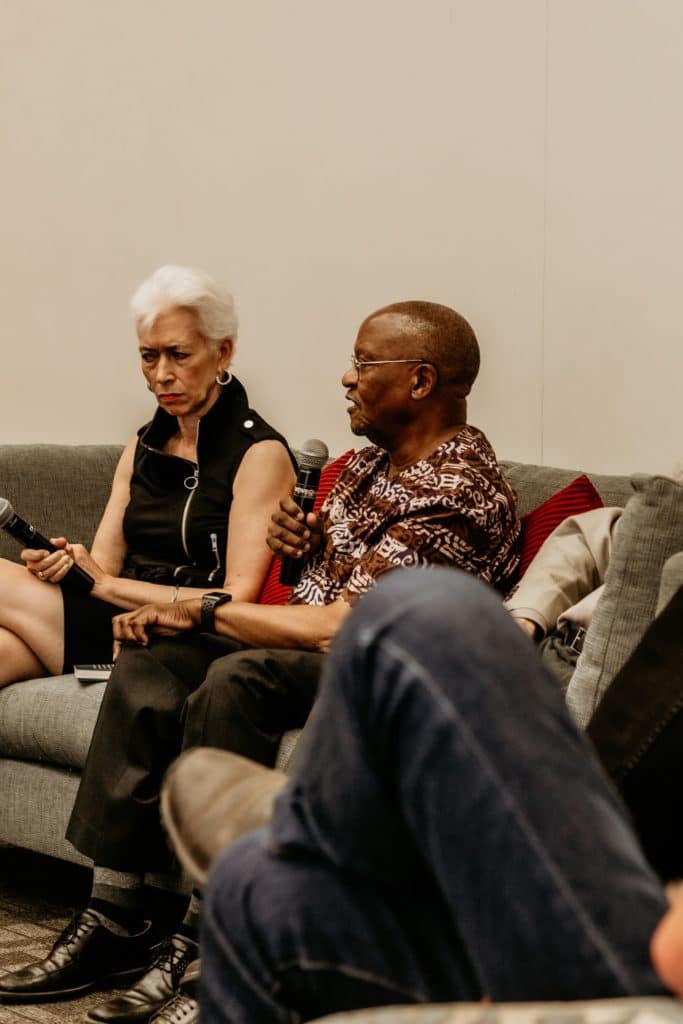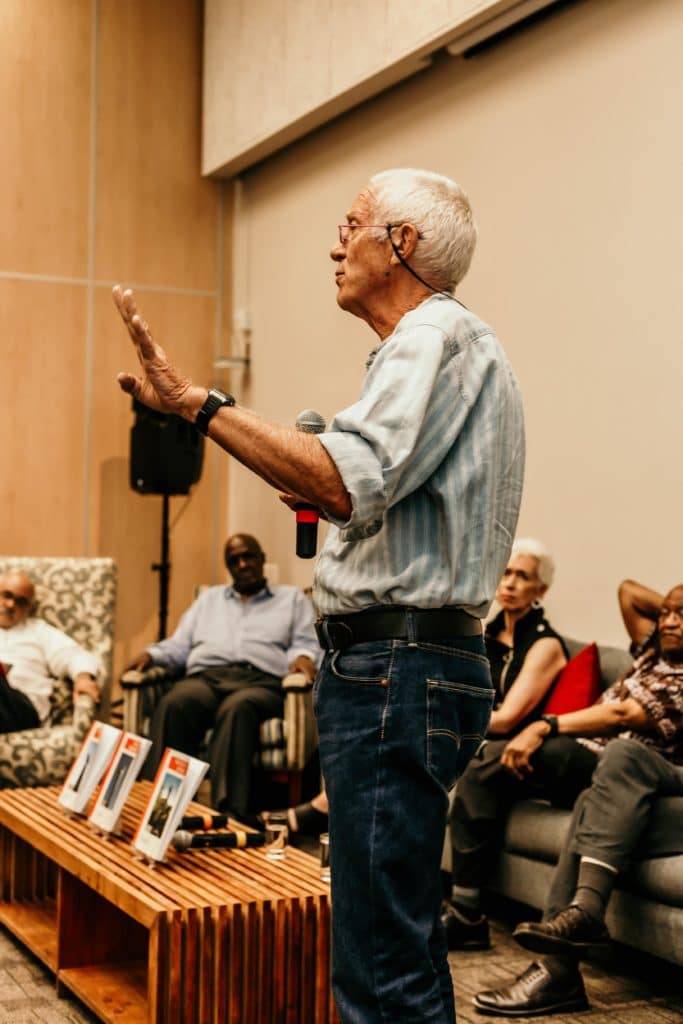Twenty-six years since the dawn of democracy and race is still a talking point in South African society. What happened to the ‘Rainbow Nation’? Why does a country with a Constitution hailed as a beacon of human rights in the world still experience incidents of interracial conflict and protests against remnants of a painful past?
The term ‘Rainbow Nation’ came into use in South Africa after 1994 when Archbishop Desmond Tutu first used it to symbolise hope for interracial unity among a diverse South African population. Former President Nelson Mandela referred to this new South Africa as a “rainbow nation at peace with itself and the world”.
But how can there be peace if race, racialism and racism are still experienced every day? Where is humanity to be found in a racialised society?
These were some of the topics highlighted at the panel discussion held to launch the book Persistence of Race produced by the STIAS Effects of Race project. This is the third and final set of essays, the two previous books, Race in Education and The Effects of Race were published in 2019 and 2018, respectively. The event also marked the culmination of the project which falls under the STIAS long-term theme, Being Human Today.
STIAS fellow, human rights lawyer and theologian, Barney Pityana led the discussion and book launch ceremony while the panel comprised STIAS fellows and members of the project group: Njabulo Ndebele, Crain Soudien, Gerhard Maré, George Chaplin, Nina Jablonski and Gӧran Therborn.
Persistence of Race considers how new information from both the biological and social sciences is changing our perspective on the nature of the human condition, including the association of biological and social phenomena with ‘race’. The essays also look at global events or movements which influence these processes in South Africa and the costs of a racialised world order to humans and humanity. Phenomena are examined through the lenses of many disciplines: sociology, history, geography, anthropology and writing.
“Despite the defeat of apartheid and the development of a state founded on human dignity, social justice and non-racism, if you listen to South Africans in conversation we remain unmistakably preoccupied with race,” said Pityana. “Apartheid is not dead – it endures. Race is a part of the DNA of South Africans. Overcoming racism and racialism remains an elusive pursuit.”
“We are trying to understand why 25 years of talking about it still hasn’t charted a clear path for the future. This is the culmination of years of work across three continents.”
The panellists specifically focused on the areas covered in their essays.
“From the 1980s onwards the country was on a different trajectory,” said Crain Soudien. “1994 is seen as the turning point but from the 1980s there was a complex rearrangement of class and race with the emergence of a sizeable black middle class. In the mid-80s this group constituted an estimated 350 000 now it ranges from 4 to 14 million depending on the source. This is extraordinary. It leads to new fractures, solidarities, divisions and loyalties, a different sociology that we need to understand.”
However, Gӧran Therborn pointed to the continuing spectre of inequality.
“South Africa today is the most unequal country on earth,” he said. “This was established before apartheid – the settler state created a dual economy and this duality was not touched in the process of dismantling apartheid. The Constitution did not deal with the underlying structure of privilege. The new regime wanted social justice but focused on categorical equality – ensuring the representation of the majority in positions of privilege and power. They forgot that equality is not just about power but also about how the majority of the population lives. One third of the labour force is excluded from the economy. The large majority of South Africans are an unemployed, excluded underclass doomed to a life of persistent poverty.”
“Race and class are intertwined and competing,” he added. “The distance between the middle and upper class is increasing with the top 1% driving inequality.”
Gerhard Maré spoke about the continued indignity and inappropriateness of official racial classification in South Africa. He pointed out that the state still creates “templates of difference” by the enforcement of such racial categorisation on official documentation and in policy.
“It’s not something that will change easily – it’s complex, with no simple answers,” he said. “But it is wrong in a truly democratic society.”
“We have to move beyond just a constitutional commitment to non-racism, dignity and equality,” he added.
He also explained that on an individual level racial categorisation is different – “It’s about an individual questioning – asking why do I belong to this race? There are circumstances in which race is a valuable categorisation.”
“We have to recognise that we live in a racial time,” added George Chaplin. “South Africa is still a relatively safe space to talk about race and racism. Most places pretend it doesn’t exist. When we don’t talk about race it doesn’t mean it has gone away.”
“We have to find a way of talking about it differently. The youth have to find their own language and way of talking about it.”
More than skin deep
Turning to her essay on perceptions of beauty, Jablonski highlighted the huge global business of skin lightening.
“Africa and Asia remain in the thrall of skin lightening,” she said. “From our research it appears that this is not as simple as a denial of blackness – many people lighten their skin as a symbol of personal empowerment. However, it’s also a big business with lots of money at stake.”
“It’s fascinating to unpack how people decide how to present themselves when they look in a mirror – how to present themselves in the workplace or to a romantic partner, for example. Most would say they just want to look better. But what is better?”
She pointed out that it will be interesting to see the effect that Zozibini Tunzi, the current Miss Universe – “an unapologetic natural beauty” has on South African youth as a potential “focus of adulation and emulation, and national pride”.
She also pointed to her essay on the power of language to enforce racism. The work explains the use of text analysis tools to look at the language and word choice in newspaper accounts of Marikana and Black Lives matter.
“There is no common understanding of blackness,” said Njabulo Ndebele. “It’s a political term that bases its understanding in relation to whiteness. Racial self-definition should have less urgency than the urgency of living in a successful country. How you look has less significance and quality of life is of a higher order. Race ought to be irrelevant in this situation.”
Starting a conversation
Speaking generally of the value and impact of the three volumes, the panellists highlighted the need for ongoing thoughtful engagement.
“We need to bring public attention to this work. A huge segment of the South African population will receive and read it despite the challenge that it offers and fully engage with the complexity,” said Ndebele. “The scholars applied their minds rigorously to the issues. The intellectual sophistication of the general public has grown phenomenally in South Africa in the last 25 years. I’m confident that the public space is ready to engage with this type of work with comprehension and understanding.”
“These works were developed by a panel of deeply thoughtful people who interrogated the knowledge space and will continue to do so,” added Jablonski. “Without challenge and engagement there is no future.”
“The texts explain what is currently going on in the country,” continued Soudien. “This is always going to be controversial. We are saying there is a lot we don’t understand and are asking us all to stop and think. It’s a commitment to cause discomfort. We need to get to the deep ways in which we come to be human and understand patterns of thinking. We will get it wrong lots of times but we are happy to engage. It’s a time for thinking deeply, the conventional wisdoms are not sufficient.”
“Publishing these works is not the end,” added Pityana. “We issue an open challenge to enable further thought and new thinking.”
“This is only the beginning statement. We need more and deeper engagement. We trust that it will lead to the beginning of intelligent engagement with issues that confront us in our country all the time.”
The three volumes are published by STIAS and African Sun Media. www.africansunmedia.co.za; [email protected]
Michelle Galloway: Part-time media officer at STIAS
Photographs: Marisa Niemandt




